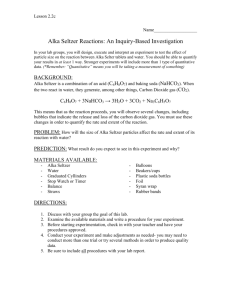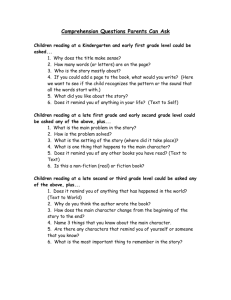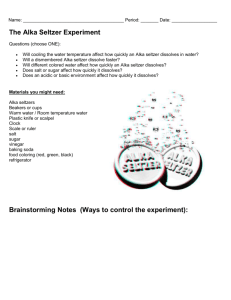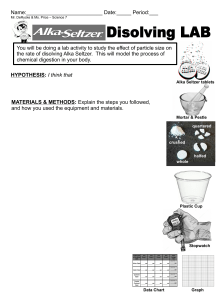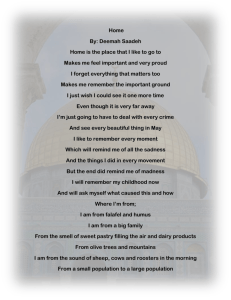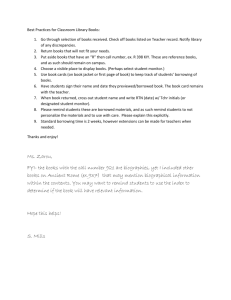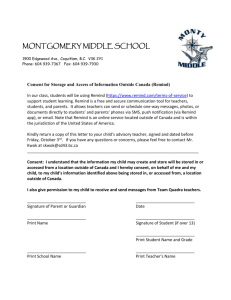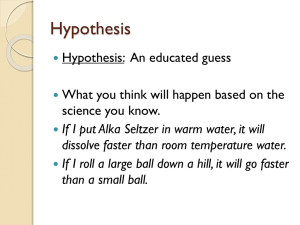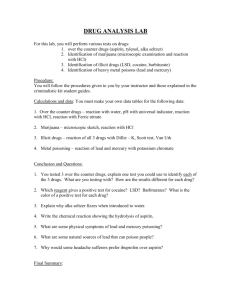Lesson2.2c- Teacher`s Guide AlkaSeltzer Inquiry Lab
advertisement
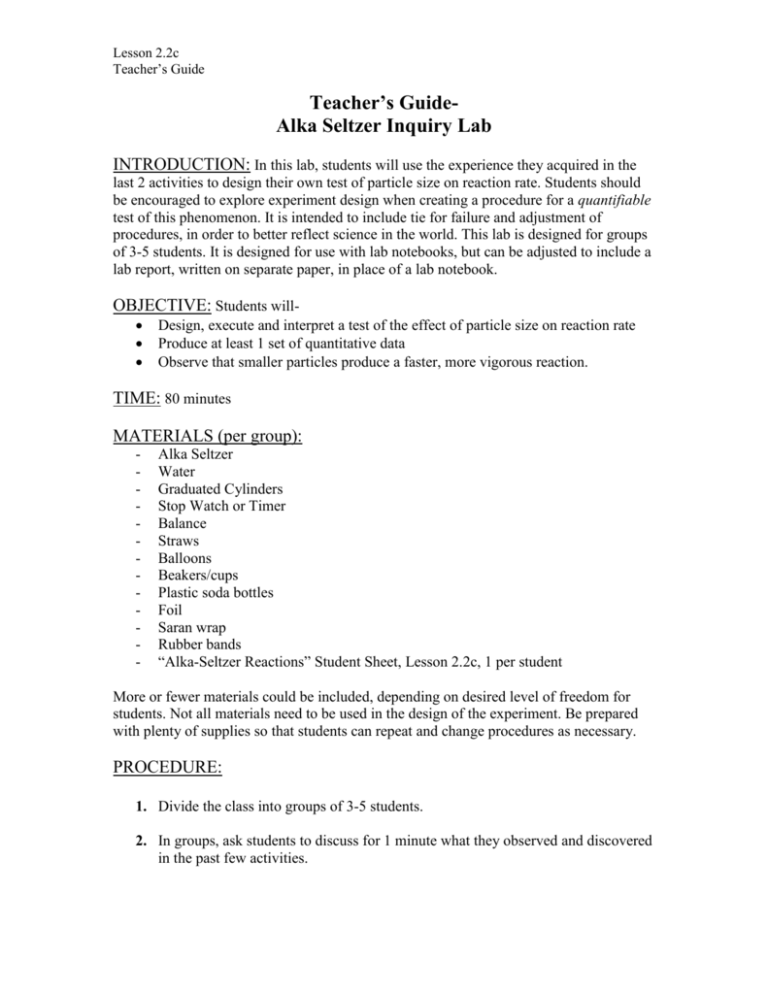
Lesson 2.2c Teacher’s Guide Teacher’s GuideAlka Seltzer Inquiry Lab INTRODUCTION: In this lab, students will use the experience they acquired in the last 2 activities to design their own test of particle size on reaction rate. Students should be encouraged to explore experiment design when creating a procedure for a quantifiable test of this phenomenon. It is intended to include tie for failure and adjustment of procedures, in order to better reflect science in the world. This lab is designed for groups of 3-5 students. It is designed for use with lab notebooks, but can be adjusted to include a lab report, written on separate paper, in place of a lab notebook. OBJECTIVE: Students will Design, execute and interpret a test of the effect of particle size on reaction rate Produce at least 1 set of quantitative data Observe that smaller particles produce a faster, more vigorous reaction. TIME: 80 minutes MATERIALS (per group): - Alka Seltzer Water Graduated Cylinders Stop Watch or Timer Balance Straws Balloons Beakers/cups Plastic soda bottles Foil Saran wrap Rubber bands “Alka-Seltzer Reactions” Student Sheet, Lesson 2.2c, 1 per student More or fewer materials could be included, depending on desired level of freedom for students. Not all materials need to be used in the design of the experiment. Be prepared with plenty of supplies so that students can repeat and change procedures as necessary. PROCEDURE: 1. Divide the class into groups of 3-5 students. 2. In groups, ask students to discuss for 1 minute what they observed and discovered in the past few activities. Lesson 2.2c Teacher’s Guide 3. Explain that students are going to test the effect of particle size on reaction rate in one more scenario, but this time, they will need to design their own procedures. Stress that one of the challenges of any experiment is finding a way to quantify your results- its not enough to say “It seemed like this happened.” They will need specific, quantitative data. Each group must have at least 1 way to quantify their results, but stronger experiments gather more than 1 type of data. 4. Describe the reaction between Alka Seltzer and Baking Soda that they will observe and walk through the chemical equation as a class. Remind students that Alka-Seltzer is a medicinal substance and should not be ingested. Students should follow all laboratory rules and wash their hands at the conclusion of the experiment. 5. Distribute supplies and allow students to start brainstorming in their groups. 6. As students work, remind students that scientists often have to adjust and revise their experiments to cope with challenges that arise. Give guidance as necessary, but encourage the students to brainstorm their own solutions to specific issues. Also remind students that all versions of the procedures should be turned in with the final lab report. LAB WRITE-UP: As groups start to conclude the experiment portion of the activity, gather the attention of the class to look at the requirements for the lab write-up. Students should look through the list of requirements and ask any questions about each aspect. Common mistakes include: not including a sketch of the final set-up, unlabeled axes on graphs, missing initial prediction. For analysis question 4, remind students that “evidence” means they should be utilizing specific data from their experiment in support of their claim. Claims without support from data will not score as well as those with support. Students may finish the lab report as homework- only the experiment must be finished during the class period. They may discuss with their groups, however each student must produce their own, unique lab report – it should not be exactly the same as the other members of their group.
